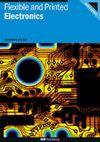电化学储能装置用低温电解质:体积和界面特性
IF 3.2
4区 工程技术
Q3 MATERIALS SCIENCE, MULTIDISCIPLINARY
引用次数: 0
摘要
摘要:随着人们对低温环境的需求日益增长,优化低温环境下的电化学储能装置(EES)至关重要。离子传输缓慢或电解质在电极-电解质界面的冻结是限制EES在低温下性能的主要因素,导致容量衰退和器件性能不稳定。本文综述了各种电解质(包括水电解质、有机电解质和离子液体)的防冻策略,以及离子在电解质电极上传输的优化方法。此外,强调了低温电解质和EES设备的设计和开发的主要挑战和前瞻性观点。本文章由计算机程序翻译,如有差异,请以英文原文为准。
Low-temperature electrolytes for electrochemical energy storage devices: bulk and interfacial properties
Abstract The optimization of electrochemical energy storage devices (EES) for low-temperature conditions is crucial in light of the growing demand for convenient living in such environments. Sluggish ion transport or the freezing of electrolytes at the electrode-electrolyte interface are the primary factors that limit the performance of EES under low temperatures, leading to fading of capacity and instability in device performance. This review provides a comprehensive overview of antifreeze strategies for various electrolytes (including aqueous electrolytes, organic electrolytes, and ionic liquids), and optimization methods for ion transport at the electrolyte-electrode. Additionally, the main challenges and forward-looking views are highlighted on the design and development of low-temperature electrolytes and EES devices.
求助全文
通过发布文献求助,成功后即可免费获取论文全文。
去求助
来源期刊

Flexible and Printed Electronics
MATERIALS SCIENCE, MULTIDISCIPLINARY-
CiteScore
4.80
自引率
9.70%
发文量
101
期刊介绍:
Flexible and Printed Electronics is a multidisciplinary journal publishing cutting edge research articles on electronics that can be either flexible, plastic, stretchable, conformable or printed. Research related to electronic materials, manufacturing techniques, components or systems which meets any one (or more) of the above criteria is suitable for publication in the journal. Subjects included in the journal range from flexible materials and printing techniques, design or modelling of electrical systems and components, advanced fabrication methods and bioelectronics, to the properties of devices and end user applications.
 求助内容:
求助内容: 应助结果提醒方式:
应助结果提醒方式:


